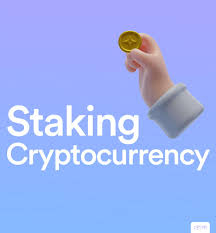THE RISE OF NON-FUNGIBLE TOKENS (NFTS)

Introduction
Non-Fungible Tokens (NFTs) have taken the digital world by storm, revolutionizing the way we think about ownership, art, and value in the digital age. Unlike traditional cryptocurrencies such as Bitcoin and Ethereum, which are fungible and can be exchanged on a one-to-one basis, NFTs are unique digital assets that represent ownership of a specific item or piece of content. This article explores the rise of NFTs, their impact on various industries, and the future potential of this groundbreaking technology.
Understanding NFTs
- What are Non-Fungible Tokens (NFTs)?
- Definition: NFTs are unique digital tokens that represent ownership of a specific item or piece of content, verified through blockchain technology.
- Characteristics: Each NFT has distinct information or attributes that make it unique, ensuring it cannot be exchanged on a one-to-one basis like fungible tokens.
- How Do NFTs Work?
- Blockchain Technology: NFTs are typically built on blockchain platforms like Ethereum, which provide a transparent and immutable ledger for verifying ownership and transactions.
- Smart Contracts: Smart contracts are used to create and manage NFTs, automating processes such as transferring ownership and ensuring the terms of agreements are enforced.
The Emergence of NFTs
- Early History and Development
- Origins: The concept of NFTs can be traced back to projects like Colored Coins (2012) and CryptoPunks (2017), which laid the groundwork for digital ownership and collectibles.
- ERC-721 Standard: Introduced in 2018, the ERC-721 standard on the Ethereum blockchain established a framework for creating and managing NFTs, paving the way for their mainstream adoption.
- Mainstream Breakthrough
- Digital Art: NFTs gained widespread attention in early 2021 when digital artist Beeple sold an NFT artwork for $69 million at Christie’s auction house.
- Celebrity and Brand Involvement: High-profile celebrities and major brands have entered the NFT space, launching their own collections and driving mainstream interest.
Impact of NFTs on Various Industries
- Art and Creativity
- Digital Art: NFTs have empowered digital artists to monetize their work directly, without intermediaries, by selling unique pieces and retaining royalties on secondary sales.
- New Mediums: Artists are exploring innovative formats, including GIFs, videos, and interactive experiences, expanding the possibilities of creative expression.
- Entertainment and Media
- Music: Musicians are using NFTs to sell exclusive albums, concert tickets, and merchandise, creating new revenue streams and closer connections with fans.
- Film and TV: NFTs are being used to fund and distribute independent films, offer exclusive behind-the-scenes content, and engage audiences with interactive experiences.
- Gaming and Virtual Worlds
- In-Game Assets: NFTs are revolutionizing gaming by enabling players to own, trade, and monetize in-game items, characters, and virtual real estate.
- Metaverse: Virtual worlds like Decentraland and The Sandbox are leveraging NFTs to create digital economies where users can buy, sell, and build within immersive environments.
- Collectibles and Sports
- Digital Collectibles: Platforms like NBA Top Shot and Sorare are offering sports fans the ability to buy, sell, and trade officially licensed digital collectibles, capturing memorable moments and player cards.
- Fan Engagement: NFTs are being used to reward loyal fans with exclusive content, experiences, and merchandise, enhancing engagement and community building.
- Real Estate and Virtual Property
- Virtual Real Estate: NFTs are being used to buy and sell virtual land in metaverse platforms, enabling users to build, rent, and monetize their virtual properties.
- Fractional Ownership: NFTs are facilitating fractional ownership of physical real estate, allowing investors to buy and sell shares of properties.
Challenges and Criticisms
- Environmental Impact
- Energy Consumption: The minting and trading of NFTs on energy-intensive blockchains like Ethereum have raised concerns about their environmental footprint.
- Sustainability Efforts: Projects are exploring solutions such as layer-2 scaling, proof-of-stake consensus mechanisms, and carbon offset initiatives to mitigate the environmental impact.
- Market Speculation
- Price Volatility: The NFT market is highly speculative, with prices for digital assets experiencing significant fluctuations.
- Bubble Concerns: Critics warn of a potential market bubble, where inflated prices may not be sustainable in the long term.
- Legal and Ethical Issues
- Copyright and Ownership: Questions about copyright infringement and the true ownership of digital assets have emerged, requiring clearer legal frameworks and enforcement mechanisms.
- Fraud and Scams: The NFT space has seen instances of fraud, plagiarism, and counterfeit items, highlighting the need for improved verification and authentication processes.
The Future of NFTs
- Integration with Emerging Technologies
- Interoperability: Enhanced interoperability between different blockchain platforms and ecosystems will allow NFTs to move seamlessly across various applications and markets.
- AI and VR: Integrating NFTs with artificial intelligence and virtual reality can create new immersive experiences and interactive content.
- Expanding Use Cases
- Identity and Authentication: NFTs can be used for digital identity verification, secure authentication, and access control in both online and offline environments.
- Supply Chain and Provenance: NFTs can track and verify the provenance of goods, ensuring authenticity and transparency in supply chains.
- Evolving Market Dynamics
- Regulation: The development of clear regulatory frameworks will provide greater legal certainty and protect investors and creators in the NFT space.
- Mainstream Adoption: As technology matures and user experiences improve, NFTs are likely to see broader adoption across various industries and demographics.
Conclusion
The rise of NFTs represents a transformative shift in the digital landscape, offering new opportunities for creators, investors, and consumers. While the market faces challenges such as environmental impact, speculation, and legal issues, the potential of NFTs to revolutionize art, entertainment, gaming, and beyond is undeniable. By staying informed and engaged with the latest developments, you can navigate the exciting and rapidly evolving world of NFTs and explore the endless possibilities they offer.






